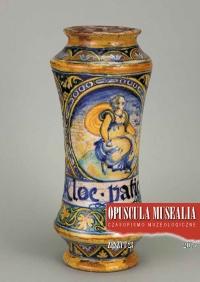Ornamenty roślinne w architekturze sakralnej Krakowa (XIX-XX w., wybrane obiekty)
Floral ornaments in sacral architecture of Cracow (the 19th–20th centuries, chosen objects)
Author(s): Pamela Będkowska, Alicja ZemanekSubject(s): Cultural history, Social history
Published by: Wydawnictwo Uniwersytetu Jagiellońskiego
Keywords: kościoły; Kraków; ornamenty roślinne; przyrodnicze podstawy dziedzictwa kulturowego; relacje natura – kultura; secesja (Art Nouveau); symbolizm roślinny
Summary/Abstract: Interdisciplinary studies on the border of botany and art devoted to the artistic representation of plants, are relatively rare, both in the world and on the Polish scale. That is why the artworks of Cracow are hardly examined from a botanical point of view. This paper presents the results of the ‘floristical’ investigations in the architecture of six churches in Cracow. Most of them were built at the end of the 19th and at the beginning of the 20th centuries, when the ideas of Art Nouveau were particularly popular. The artists of that period were interested in Nature, which inspired them to create many realistic or stylized plant pictures in architecture, painting, sculpture, and so on. Cracow churches can serve as an example, in which the identification of over 70 taxa including ca. 30 species, almost 40 genera and 3 families was possible. The representations of some old useful plants native to the Mediterranean, and West Asia, e.g. Madonna lily (Lilium candidum L.), and grape-vine (Vitis vinifera L.), considered as sacred in antiquity, and having abundant symbolic meanings in Christianity, were found. Apart from this. many wild species of Poland, e.g. white water-lily (Nymphaea alba L.), and also plants cultivated in Polish gardens, such as crown imperial (Fritillaria imperialis L.), and many others, were noticed as well. The richest from a botanical point of view appeared to be the Jesuits Church (Basilica of the Sacred Heart of Jesus), where ca 50 taxa, as well as ‘the gallery of plants portraits’ in the carvings of the pulpit, the pews, and the confessionals were noticed. Additionally, magnificent floral ornaments were found in the Church of St. Francis of Assisi – ca. 30 taxa, with famous polichromies, and stained-glass windows made by Stanisław Wyspiański. This article is a contribution to the preparation of the list of plants important to the Polish culture, and a part of the natural history basis of cultural heritage. Such species should be protected both in the natural landscape, and in cultivation.
Journal: Opuscula Musealia
- Issue Year: 2016
- Issue No: 24
- Page Range: 93-106
- Page Count: 14
- Language: Polish

